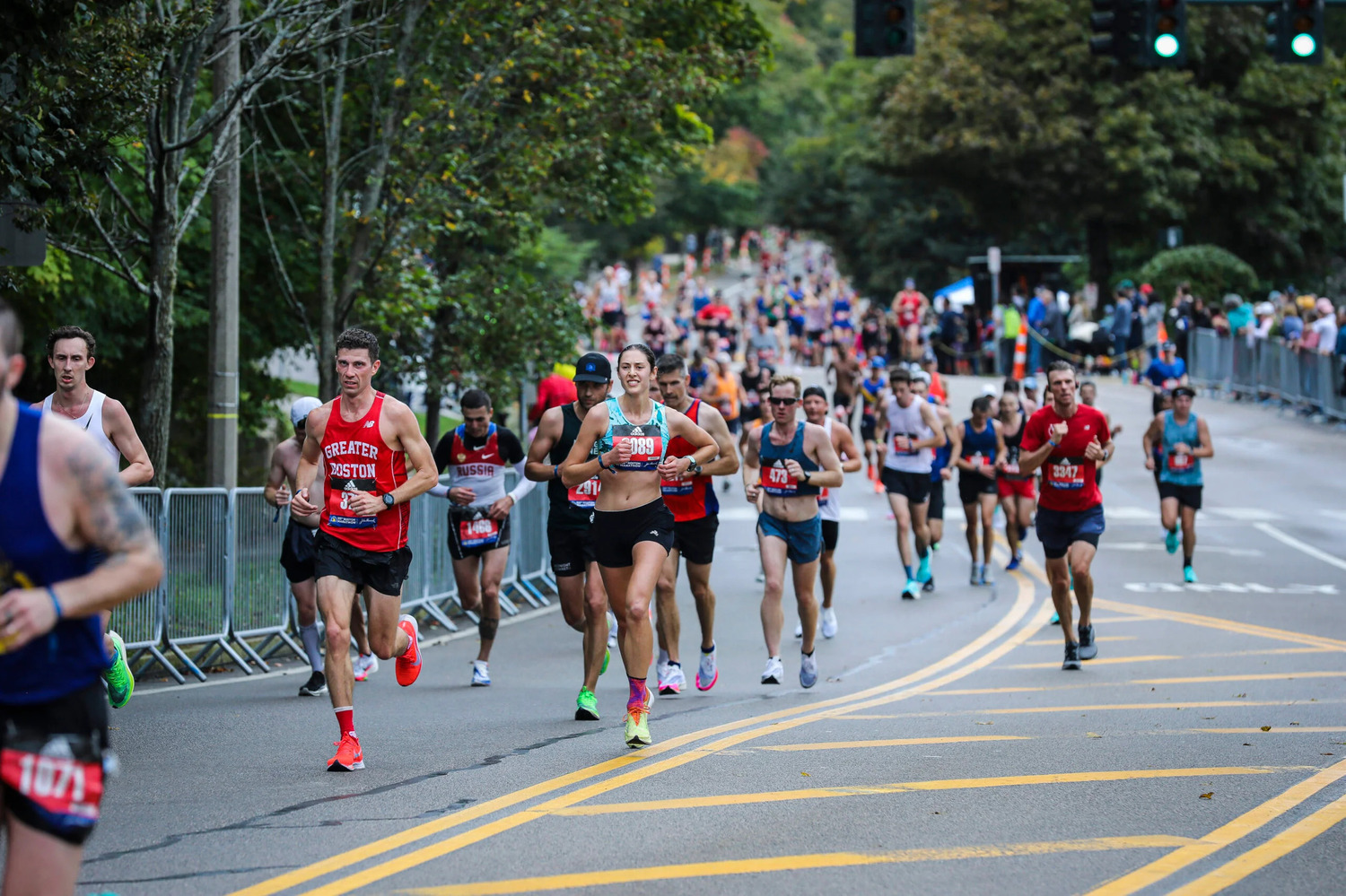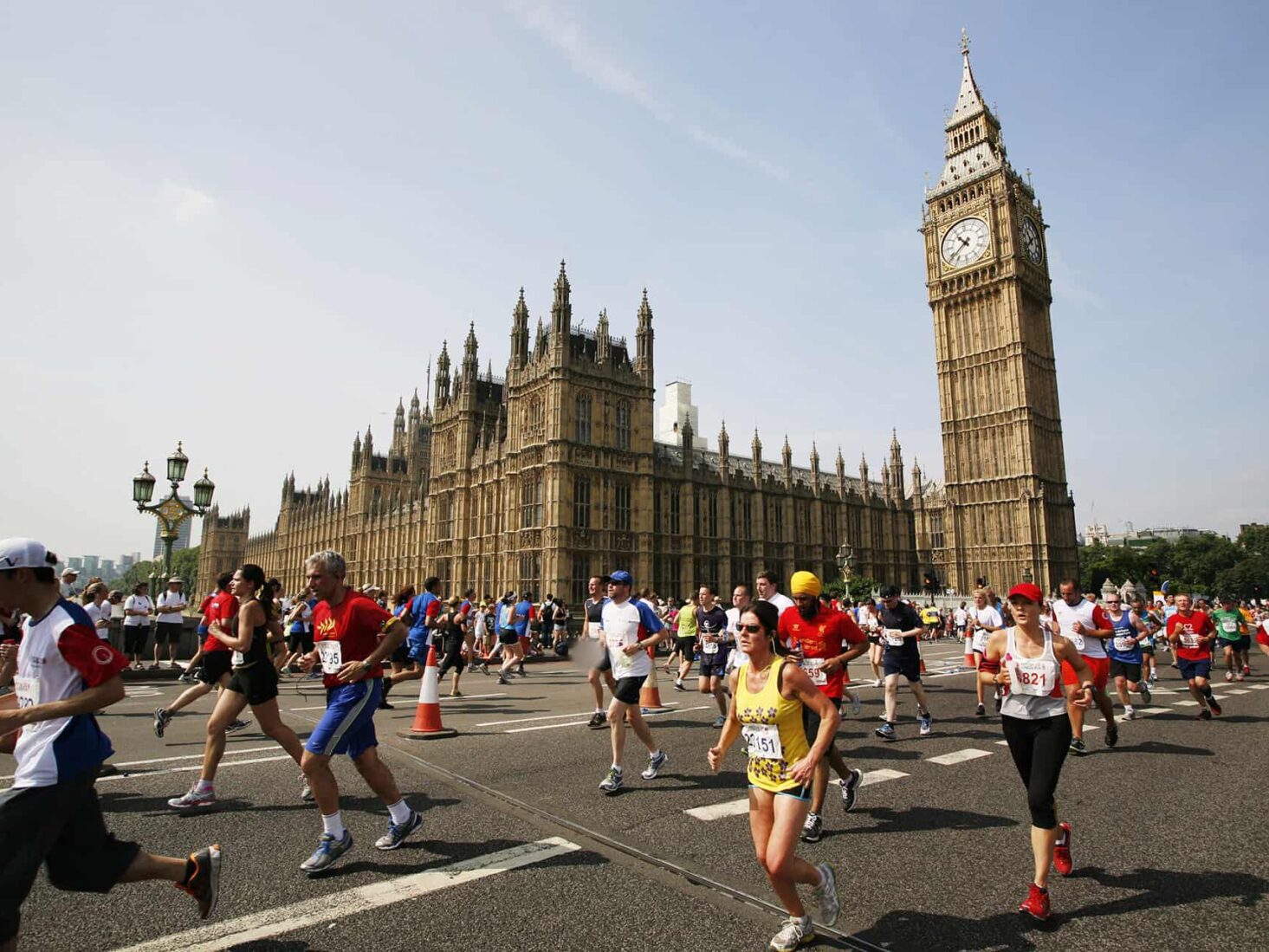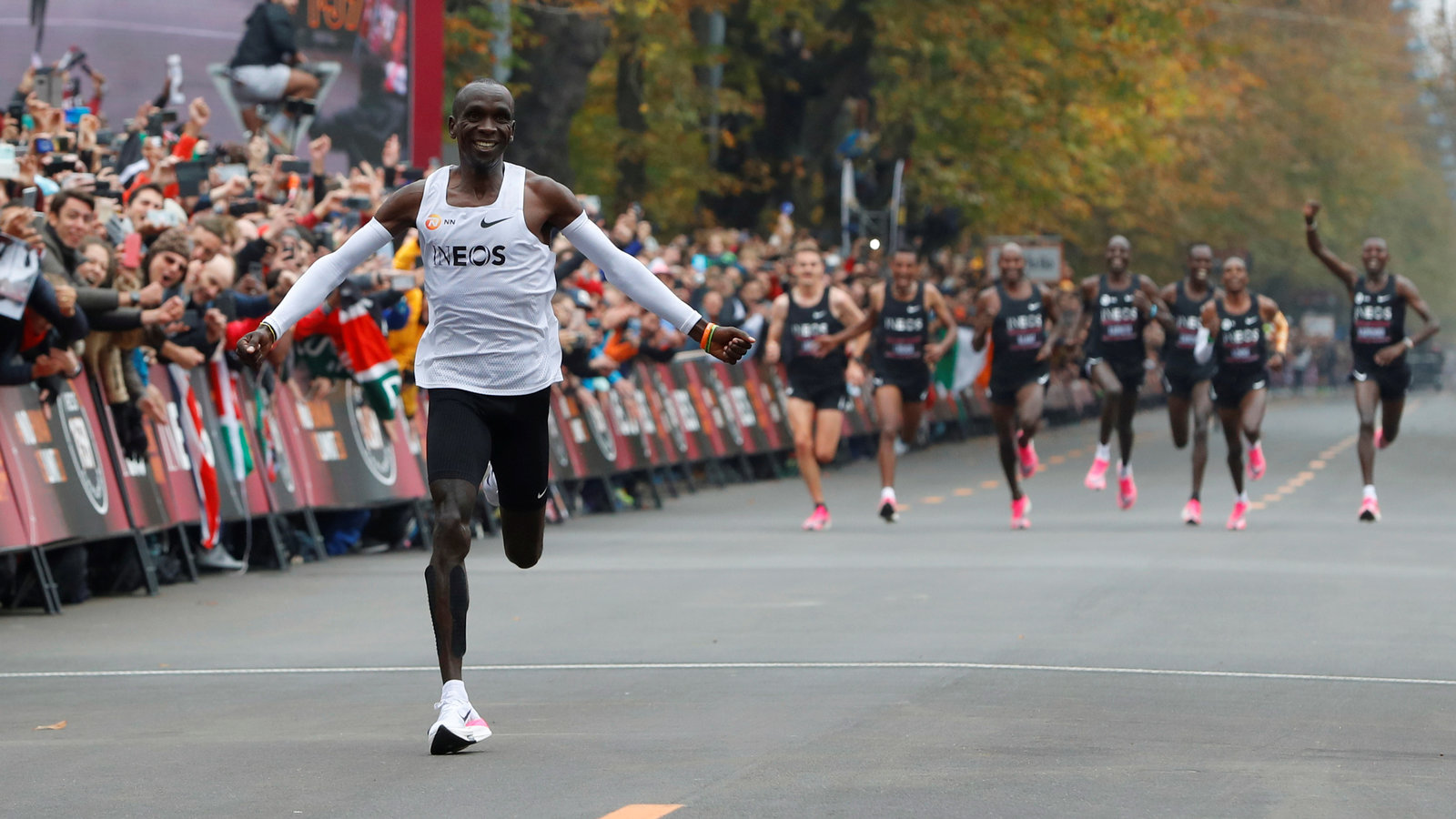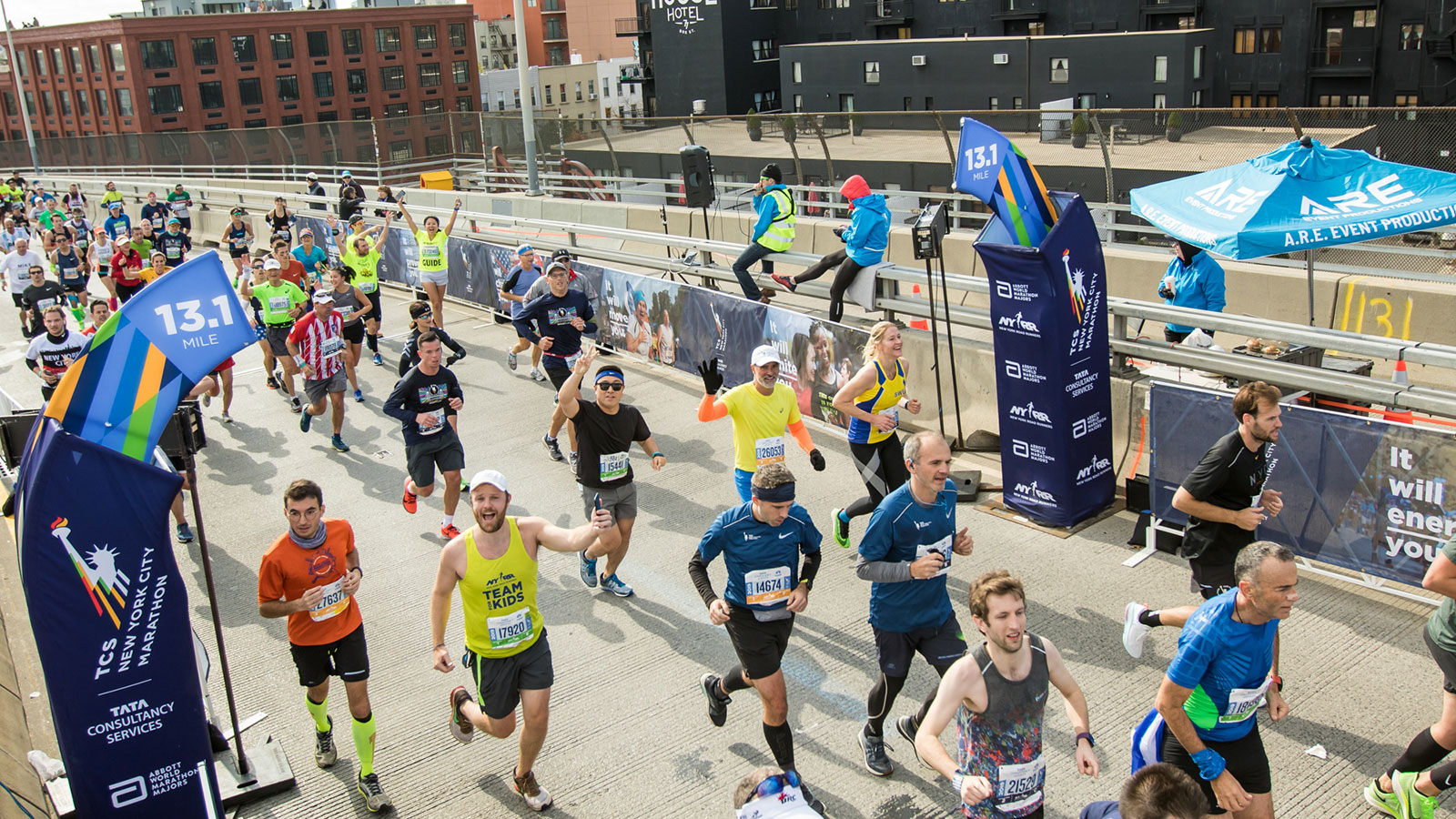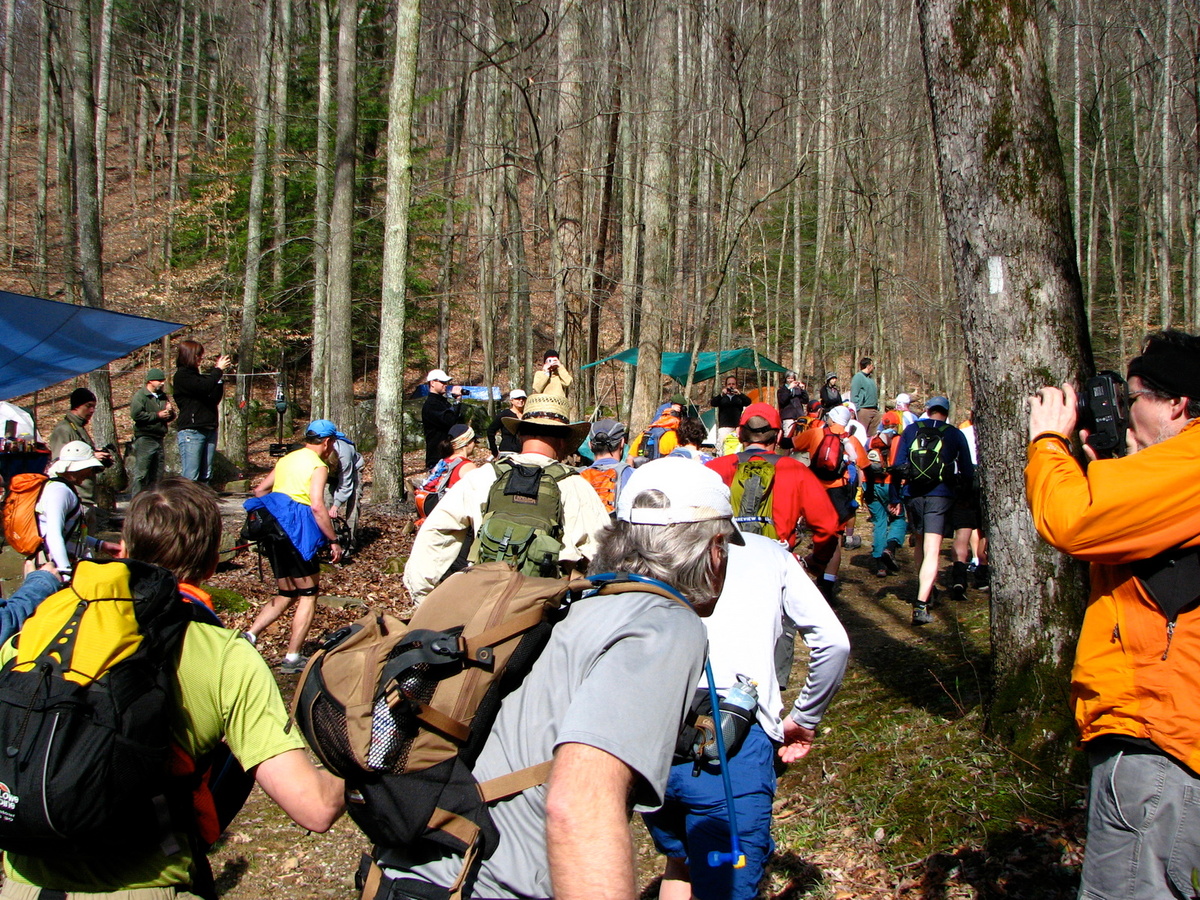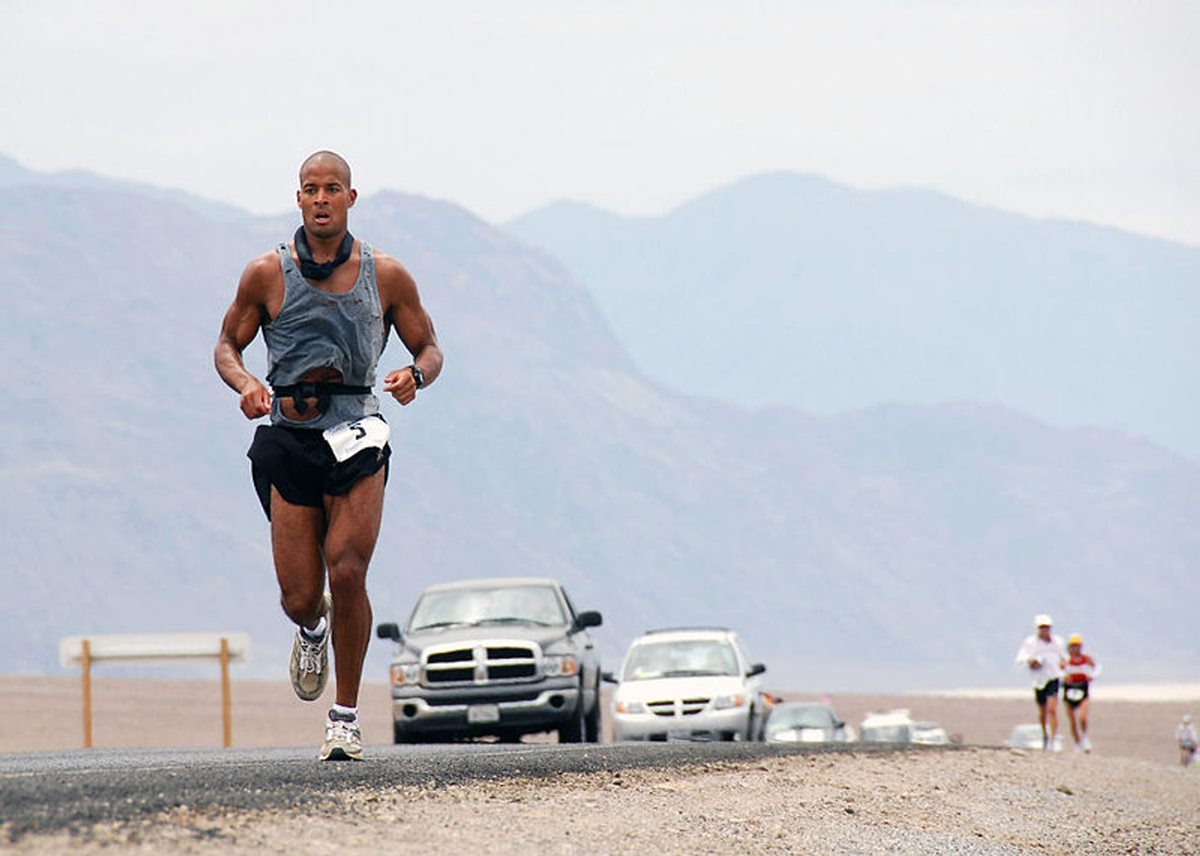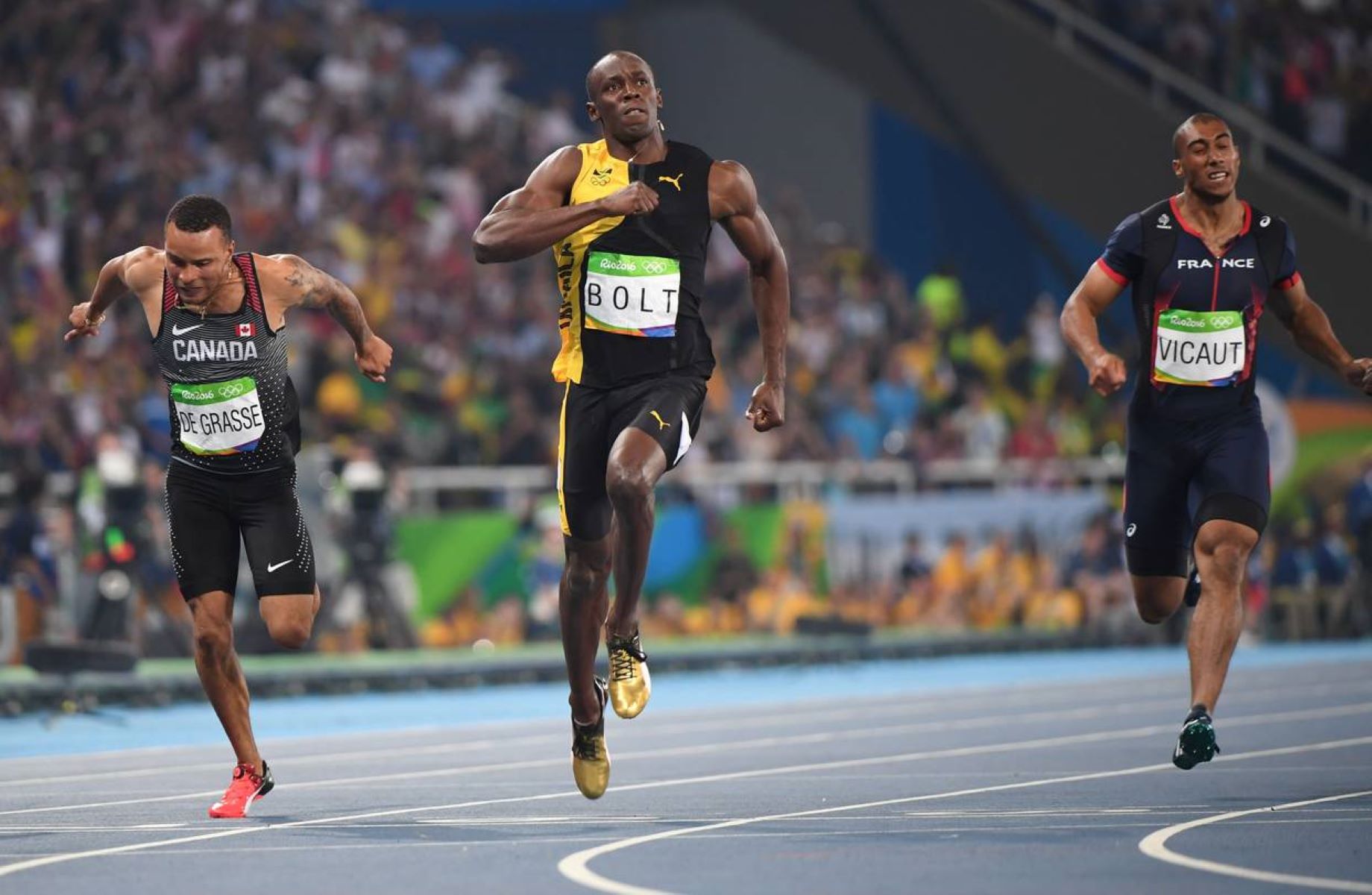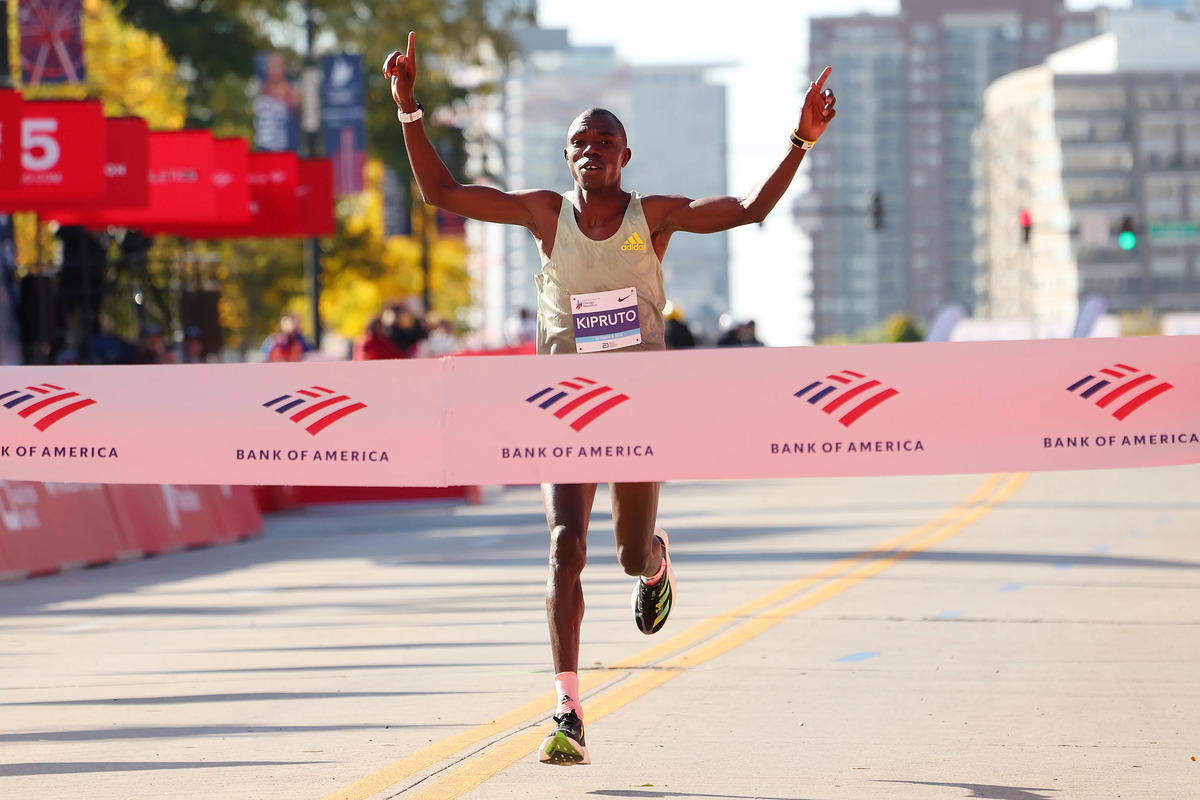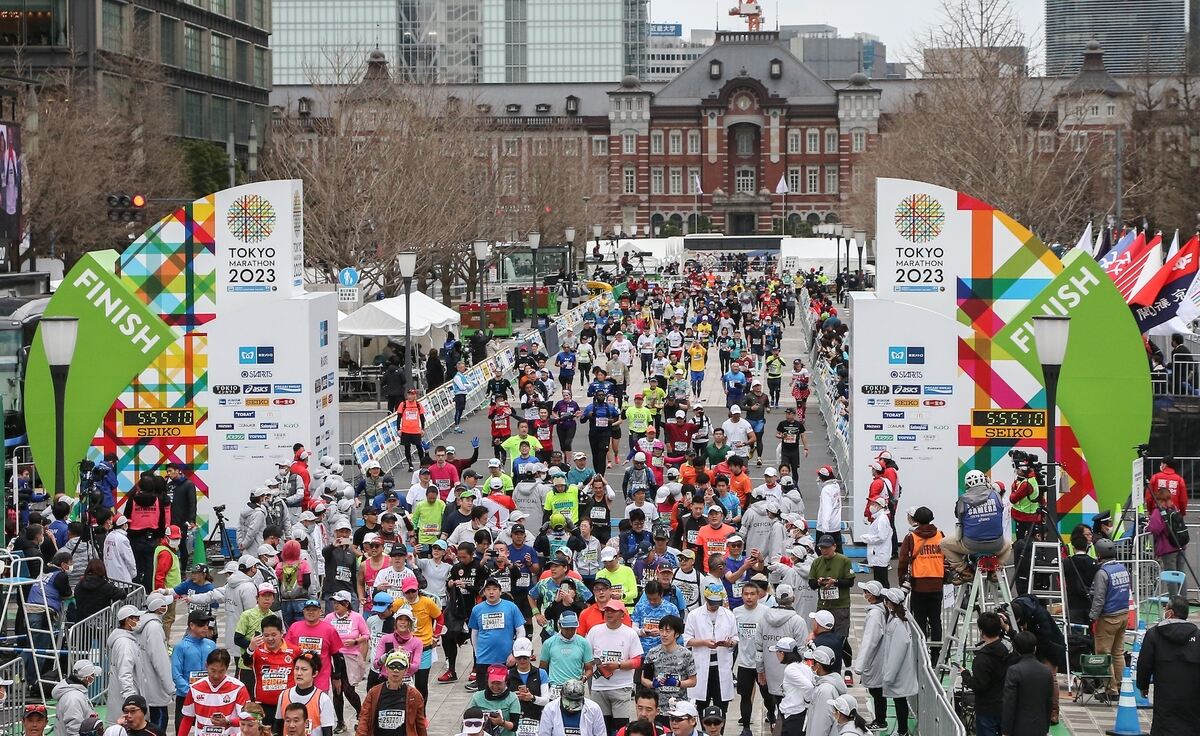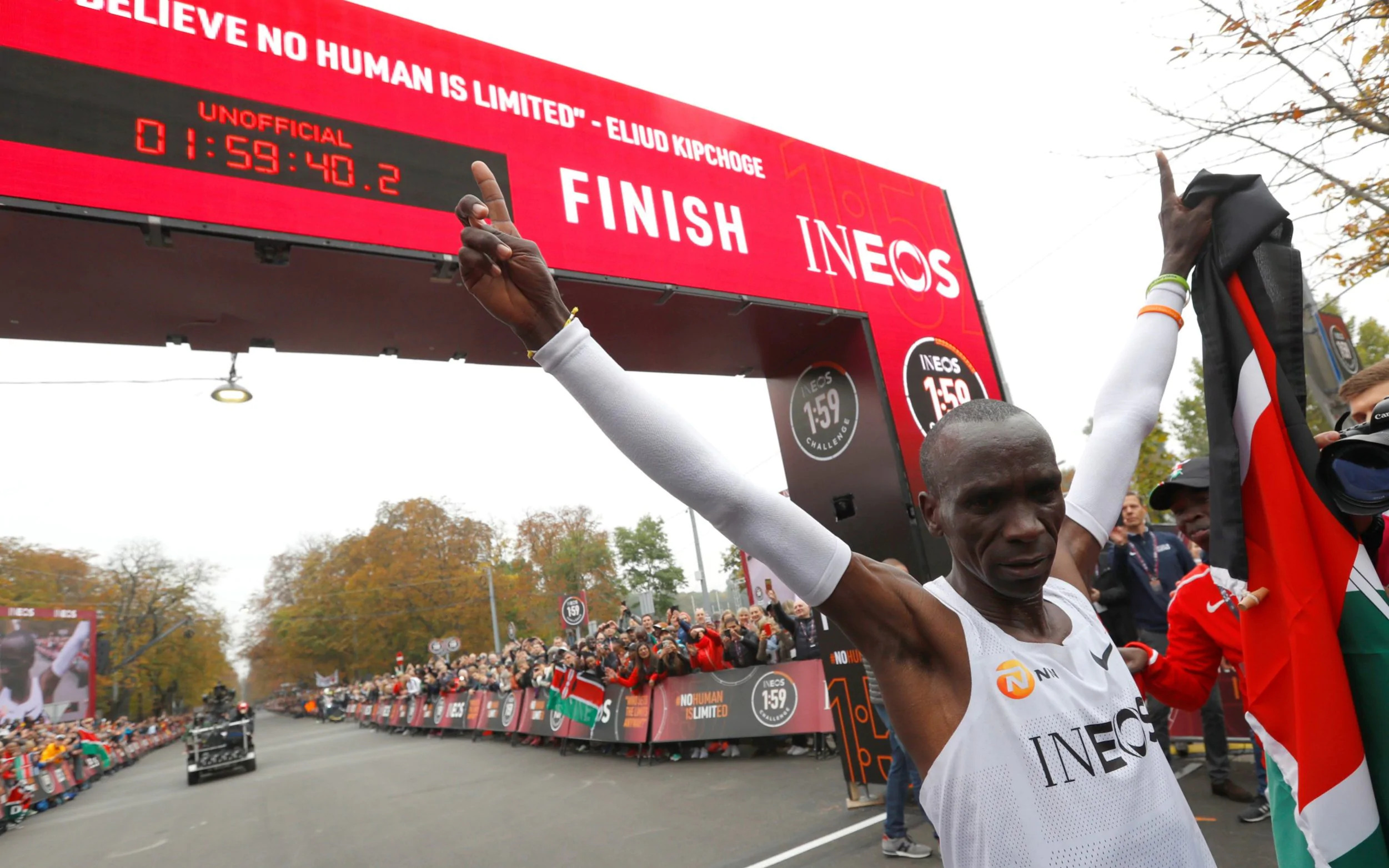

Featured
What Is The Fastest Marathon Time
Modified: January 22, 2024
Discover the reigning world record for the fastest marathon time, featured by elite athletes pushing the limits of human endurance.
Introduction
Marathon running is a sport that has captivated athletes and spectators alike for centuries. It showcases the endurance and determination of individuals pushing themselves to their limits, both physically and mentally. The quest for speed and records in marathon running has always been a significant focus in the sport, with runners constantly pushing the boundaries of what was once deemed humanly possible.
In this article, we will delve into the fascinating world of marathon running and explore the topic of the fastest marathon time. We will examine the evolution of marathon records, the recent breakthrough in breaking the elusive 2-hour barrier, and the current fastest recorded marathon time. Additionally, we will discuss the various factors that influence fast marathon times and explore the training techniques used by elite athletes to achieve faster results.
Marathon running traces its origins back to ancient Greece, where the legendary tale of Pheidippides running from the city of Marathon to Athens to deliver a message of victory during the Battle of Marathon sparked the inception of this iconic endurance event. Since then, marathon races have become a widespread sporting phenomenon, attracting thousands of participants from all around the world.
Over the years, marathon records have been continually shattered as athletes strive for greater speed and endurance. The evolution of marathon records showcases the incredible advancements in training techniques, nutrition, equipment, and overall athletic performance. From the early days of marathon running to the present, the record times have seen significant reductions.
In recent years, there has been much excitement surrounding the possibility of breaking the 2-hour barrier in the marathon. Many believed it to be an insurmountable task, as it required an average pace of under 4 minutes and 35 seconds per mile. However, with advances in technology and extensive scientific research, the barrier was finally broken in a controlled environment during the INEOS 1:59 Challenge in 2019.
The current fastest recorded marathon time stands as a testament to the astonishing feats that athletes can achieve. This extraordinary accomplishment not only showcases the physical prowess of the runner but also embodies the culmination of years of dedication, training, and perseverance.
Understanding Marathon Running
Marathon running is a grueling feat of endurance that requires not only physical strength but also mental fortitude. The marathon distance is set at 26.2 miles or 42.195 kilometers, making it one of the most challenging long-distance races in the world. Runners embark on a journey that tests their physical capabilities, pushing their bodies to the brink of exhaustion.
Training for a marathon involves a careful balance between building aerobic capacity, developing muscular strength and endurance, staying injury-free, and maintaining proper nutrition. It often takes months of dedicated preparation to ensure that the body is ready to handle the demands of the race. Long, slow distance runs, tempo runs, interval training, and strength workouts are essential components of a marathon training program.
During a marathon, runners strategically pace themselves, aiming to maintain an even speed throughout the race. It’s crucial not to start too fast, as this can lead to early burnout, but also not to hold back too much, risking a slower overall time. Mental strength plays a significant role in marathon running, as runners must overcome physical fatigue and mental doubts to push through to the finish line.
Marathons are often held in iconic locations, such as major cities or along scenic routes, attracting large crowds of spectators. The atmosphere of a marathon race is electric, with cheering spectators lining the streets, providing encouragement and support to the runners. This support can be a powerful motivator, helping runners stay focused and pushing them to achieve their goals.
Marathon running is not just reserved for elite athletes; it is a sport that is open to enthusiasts of all abilities. Many marathons offer different categories, such as age groups or wheelchair divisions, ensuring that everyone has the opportunity to participate and challenge themselves. For some, completing a marathon is a personal accomplishment, while for others, it serves as a platform to raise funds and awareness for charitable causes.
Marathon running has a significant impact on both the body and mind. Physically, it helps improve cardiovascular health, strengthens muscles, and boosts overall fitness. Mentally, the intense training and the act of completing a marathon can foster a sense of personal achievement, perseverance, and determination that transcends into other areas of life.
In the next section, we will explore the evolution of marathon records and how athletes have continually strived to push the limits of human performance in the quest for the fastest marathon time.
Evolution of Marathon Records
The history of marathon records is a testament to the incredible progress and advancements made in the sport of marathon running. From the early days of the marathon in the late 19th century to the present, athletes have continuously pushed the boundaries of what was once thought to be humanly possible.
In 1908, the marathon distance was standardized at 26.2 miles, and with it came the first official world record. Italian runner Dorando Pietri set a time of 2 hours, 54 minutes, and 46 seconds at the London Olympic Games, marking the beginning of a new era for marathon records. Over the following decades, athletes from various countries made significant contributions to lowering the record time.
During the 1960s and 1970s, there was a surge in marathon running popularity and a wave of exceptional athletes emerged. Legendary runners such as Abebe Bikila, Frank Shorter, and Bill Rodgers shattered records and set new benchmarks in the sport. The marathon became a symbol of endurance and grit, captivating audiences around the world.
As training techniques and scientific understanding of human performance improved, marathon record times continued to decrease. In the 1980s, athletes like Rob de Castella, Steve Jones, and Alberto Salazar pushed the limits of the sport, setting new records and inspiring a new generation of runners.
Perhaps one of the most significant milestones in the evolution of marathon records occurred in 1999 when Moroccan runner Khalid Khannouchi set a time of 2 hours, 5 minutes, and 42 seconds at the Berlin Marathon, becoming the first athlete to break the 2 hours and 6 minute barrier. This achievement paved the way for future record-breaking performances.
In recent times, the marathon world record has seen rapid progress. Athletes such as Eliud Kipchoge, Kenenisa Bekele, and Brigid Kosgei have consistently pushed the boundaries, setting new records and rewriting the history books. Technological advancements in shoes, nutrition, and training methods, along with improved understanding of biomechanics, have played a role in these remarkable achievements.
The evolution of marathon records is not only a result of individual athleticism but also a reflection of the collective drive and competitiveness within the sport. As athletes continue to challenge each other and strive for faster times, the records will likely continue to be broken.
Now that we have explored the history of marathon records, let’s delve into the recent breakthrough in breaking the 2-hour barrier and the monumental achievement it represents for the sport.
Breaking the 2-Hour Barrier
For decades, breaking the 2-hour barrier in the marathon seemed like an impossible feat, a dream that only existed on the fringes of possibility. The idea of running 26.2 miles in under 2 hours required an average pace of under 4 minutes and 35 seconds per mile, a pace that had never been sustained for such a distance. However, in recent years, advancements in technology, training methods, and human understanding of performance have brought this seemingly unattainable goal within reach.
In 2017, Nike launched the Breaking2 project, an ambitious endeavor aimed at breaking the 2-hour barrier in the marathon. The project brought together a team of elite athletes, world-class coaches, nutritionists, and scientists to create the ideal conditions for the record attempt. One of the most significant innovations was the development of the Nike Vaporfly shoes, which featured a unique foam midsole and carbon-fiber plate that enhanced running economy.
The Breaking2 project culminated in a carefully orchestrated attempt in May 2017 at the Autodromo Nazionale Monza race track in Italy. Eliud Kipchoge, the current marathon world record holder, along with two other elite runners, set out to achieve what was once considered impossible. Kipchoge completed the marathon in an astonishing time of 2 hours and 25 seconds, falling just short of the elusive sub-2-hour mark.
Although Kipchoge’s attempt did not officially count as a world record due to the controlled race conditions, it served as a pivotal moment in the history of marathon running. It proved that breaking the 2-hour barrier was no longer a matter of if but when. The incredible display of human potential and the sheer determination demonstrated by Kipchoge and his fellow runners inspired the running community and ignited widespread excitement for the future of the marathon.
Two years after the Breaking2 project, in October 2019, Eliud Kipchoge once again made history at the INEOS 1:59 Challenge in Vienna, Austria. In what was dubbed the “Ineos 1:59 Challenge,” Kipchoge completed the marathon distance in a remarkable time of 1 hour, 59 minutes, and 40 seconds. Although the record did not count as an official world record due to the controlled race conditions and the assistance of a rotating team of pacemakers, it served as a monumental achievement and a testament to the possibilities of human performance.
Kipchoge’s sub-2-hour marathon was a true showcase of mental and physical excellence. It demonstrated that with the right training, mindset, and support, extraordinary feats can be accomplished. While Kipchoge’s record may not officially be recognized as the fastest marathon time, it remains an iconic moment in the history of the sport and has undoubtedly paved the way for future record-breaking performances.
Now that we have explored the breakthrough in breaking the 2-hour barrier, let us turn our attention to the current officially recognized fastest marathon time and the factors that influence fast marathon times.
The Current Fastest Marathon Time
The current fastest marathon time is held by Eliud Kipchoge of Kenya, who set the record on September 16, 2018, at the Berlin Marathon. Kipchoge completed the race in a phenomenal time of 2 hours, 1 minute, and 39 seconds. This incredible achievement shattered the previous record held by Dennis Kimetto of Kenya, who had set a time of 2 hours, 2 minutes, and 57 seconds at the same race four years prior.
Kipchoge’s record-breaking performance in Berlin showcased the culmination of years of dedicated training, meticulous preparation, and extraordinary talent. His exceptional endurance, the efficient running form, and the ability to maintain an impressively high pace throughout the race propelled him to surpass the previous record by a significant margin.
Several factors contributed to Kipchoge’s record-breaking marathon time. One crucial element was the careful selection of race conditions. The Berlin Marathon is renowned for its fast and flat course, which minimizes elevation changes and provides optimal conditions for achieving high speeds.
In addition to the favorable course, Kipchoge had a team of pacemakers who assisted him throughout the race. These pacemakers, who are themselves elite runners, aided Kipchoge by setting and maintaining a consistent pace, shielding him from the wind, and providing him with a mental boost. This strategy allowed Kipchoge to focus solely on his running and optimize his performance.
Kipchoge’s training regimen also played a crucial role in his record-breaking performance. He followed a meticulous training plan, which included high mileage, speed workouts, long runs, and strength training. His physical conditioning and muscular endurance enabled him to sustain a fast pace over the course of the marathon.
Furthermore, Kipchoge’s mental mindset and unwavering determination were essential in achieving his record time. He is known for his positive outlook, his focus on the present moment, and his belief in the power of concentration and mental strength. These attributes allowed him to overcome pain, fatigue, and doubts, enabling him to maintain his pace and push through to the finish with relentless determination.
Kipchoge’s record-breaking marathon time has not only set a new benchmark in the sport but also raised questions about the limits of human performance. It has ignited a sense of awe and inspired other athletes to push themselves further, redefining what was once considered possible.
As advancements in technology, training methods, and scientific understanding continue to evolve, it is conceivable that Kipchoge’s record may one day be broken. However, his achievement will always be remembered as a moment of extraordinary triumph and a testament to the indomitable will and remarkable capabilities of the human spirit.
Now that we have explored the current fastest marathon time, let’s delve into the various factors that influence fast marathon times and the training techniques used by elite athletes to achieve these remarkable results.
Factors Influencing Fast Marathon Times
Several factors contribute to fast marathon times, and understanding these elements can help athletes optimize their performance and strive for faster results. Let’s explore some of the key factors influencing fast marathon times:
1. Genetic Endowment: Genetic factors play a significant role in determining an individual’s potential for marathon running. Certain genetic traits, such as high aerobic capacity, efficient oxygen utilization, and fast-twitch muscle fibers, can contribute to improved running performance. However, it is important to note that while genetics may provide a foundation, hard work and training are essential for achieving fast marathon times.
2. Training Load: Training volume and intensity are crucial in preparing the body for the demands of the marathon. High mileage running, combined with speed workouts, long runs, and interval training, helps improve aerobic capacity, muscular endurance, and running economy. Gradual and progressive training programs allow athletes to build endurance while minimizing the risk of injuries.
3. Running Economy: Running economy refers to how efficiently an individual uses oxygen to maintain a given pace. Improving running economy involves techniques such as proper running form, optimal stride length, and cadence. Strength training and plyometric exercises can also help develop muscular power and efficiency, leading to improved running economy.
4. Mental Resilience: Mental strength and resilience play a crucial role in marathon running. The ability to stay focused, manage discomfort, and maintain a positive mindset is essential for pushing through fatigue and challenging moments during the race. Mental techniques such as visualization, goal-setting, and mindfulness training can aid in developing mental resilience.
5. Nutrition and Hydration: Proper nutrition and hydration are vital for maintaining energy levels and preventing fatigue during a marathon. Carbohydrate-loading before the race, consuming sufficient fuel during the event, and staying hydrated help optimize performance. Each athlete may have different nutritional needs, and finding an individualized approach that works best is key to maximizing performance.
6. Course Conditions: The course on which a marathon is run can significantly impact finish times. Flat and fast courses with minimal elevation changes and favorable weather conditions allow for faster times. Tailwinds and temperature within a comfortable range can also contribute to improved performance.
7. Race Strategy: Developing a well-executed race strategy is essential for achieving a fast marathon time. This involves pacing oneself appropriately throughout the race, taking advantage of downhill sections, and strategically timing energy gels or fluids. Balancing the desire to start strong with the need to conserve energy for later stages of the race is crucial in optimizing performance.
By understanding and optimizing these factors, athletes can work towards improving their marathon times. However, it is important to note that each individual is unique, and what works for one runner may not work the same for another. Finding the right balance of training, nutrition, mental preparation, and race strategy is a process that may require experimentation and adjustments.
Now that we have examined the factors influencing fast marathon times, let’s delve into the various training techniques used by elite athletes to achieve faster results.
Training Techniques for Faster Times
Elite athletes employ various training techniques to optimize their performance and achieve faster marathon times. These techniques combine a balance of endurance, speed, strength, and recovery to enhance overall fitness and running efficiency. Let’s explore some of the key training techniques used by marathoners:
1. High Mileage: Building a strong aerobic base is crucial for marathon runners. This involves gradually increasing weekly mileage, focusing on long, slow distance runs. These runs improve endurance, enhance fat-burning capacity, and strengthen the cardiovascular system.
2. Speed Workouts: Incorporating speed workouts into training is essential for developing race pace and increasing anaerobic capacity. This can include tempo runs, intervals, and fartlek training. These workouts improve lactate threshold, running economy, and the ability to maintain a fast pace during the race.
3. Long Runs: Regular long runs are essential for building endurance and mental toughness. These runs simulate the marathon distance, gradually increasing in duration over time. Long runs teach the body to sustain effort for an extended period and build confidence in handling the demands of the race.
4. Strength Training: Adding strength training exercises to a marathon training program helps develop muscular strength and power, which can improve running economy and reduce the risk of injuries. Targeting specific muscle groups, such as the core, legs, and glutes, can enhance running form and overall performance.
5. Cross-Training: Incorporating cross-training activities like swimming, cycling, or elliptical workouts can provide low-impact alternatives that complement running. These activities help maintain cardio fitness, aid in recovery, and reduce the risk of overuse injuries.
6. Recovery Days: Rest and recovery are vital components of a training program. Scheduled rest days help the body adapt to the stress of training and prevent overtraining. In addition to rest days, incorporating techniques like foam rolling, stretching, and massage can aid in recovery and muscle relaxation.
7. Nutrition and Hydration: Fueling the body with proper nutrition before, during, and after workouts is crucial for optimal performance. A well-balanced diet with emphasis on carbohydrates, protein, and healthy fats fuels training and aids in recovery. Adequate hydration is also essential for maintaining performance and preventing dehydration during training and the race.
8. Mental Preparation: Developing mental resilience is just as important as physical training. Techniques such as visualization, positive self-talk, and goal setting can help athletes stay focused, maintain motivation, and push through challenging moments during the race.
It is important to note that training techniques should be personalized based on individual abilities, goals, and training history. Working with a coach or utilizing training plans designed by experienced professionals can help in tailoring a program to specific needs.
By incorporating these training techniques, marathoners can improve their fitness, enhance performance, and work towards achieving faster marathon times. Consistency, patience, and a gradual progression in training are key factors in ensuring sustainable progress and continued improvement.
Now that we have explored the training techniques used by elite athletes, let us conclude our discussion on the fascinating world of marathon running.
Conclusion
Marathon running is a remarkable sport that embodies the human spirit of endurance, perseverance, and pushing limits. The quest for faster marathon times has captivated athletes and spectators for generations, serving as a testament to the relentless pursuit of excellence.
In this article, we have explored the fascinating world of marathon running, from the origins of the marathon distance to the evolution of marathon records. We delved into the breakthrough in breaking the 2-hour barrier, as well as the current fastest marathon time set by Eliud Kipchoge. We also examined the factors influencing fast marathon times, such as genetics, training load, running economy, mental resilience, nutrition, course conditions, and race strategy. Furthermore, we explored the various training techniques used by elite athletes to achieve faster times.
Marathon running is a combination of physical and mental fortitude. It requires dedication, discipline, and a commitment to consistent training. The ability to overcome challenges, keep pushing when the body wants to quit, and maintain a positive mindset are all crucial for success in this demanding sport.
Whether one is an elite athlete striving for a world record or an amateur runner aiming for a personal best, marathon running offers a platform for individuals to discover their potential, set goals, and challenge themselves. It is a sport that fosters camaraderie, community, and personal growth.
As advancements in technology, training methods, and scientific understanding continue to evolve, we can only imagine what the future holds for marathon running. New records will be set, barriers will be broken, and the sport will continue to captivate the imagination of both participants and spectators around the world.
So, lace up your running shoes, embrace the challenges that lie ahead, and join the timeless tradition of marathon running. Whether you’re aiming for a personal best or just seeking the transformative power of the marathon, remember that the journey is just as important as the destination.
